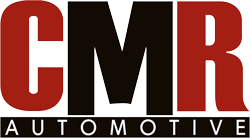Your car’s alignment is crucial for maintaining proper handling, tyre wear and overall safety on the road. Over time, factors like potholes, curb impacts, and regular wear and tear can lead to misalignment issues. Knowing when your car needs an alignment and taking prompt action can help prevent further damage and costly repairs. In this article, we will explore how to recognise the signs of misalignment and what to do when your car needs an alignment.
Signs of misalignment
Uneven tyre wear. One of the most common signs of misalignment is uneven tyre wear. If you notice that the tread on one or more tyres is wearing down faster than the others, it could indicate misalignment.
Vehicle pulls to one side. When driving on a straight, level road, your car should travel in a straight line without you having to constantly correct the steering. If your vehicle pulls to one side or the other, it’s a clear sign that the wheels are not aligned properly.
Steering wheel off-centre. If your steering wheel is not centred when driving straight, it suggests alignment issues. This can often be noticed when you’re holding the wheel straight, but the car doesn’t travel in a straight line.
Vibrations or shaking. Misalignment can cause vibrations or shaking in the steering wheel or even in the entire vehicle. These vibrations can become more noticeable at higher speeds.
Squealing tyres. When your tyres are not properly aligned, they can drag along the road at odd angles, causing squealing sounds during turns or when making sharp manoeuvres.
What to do when your car needs an alignment
Get a professional inspection. If you suspect your car needs an alignment, it’s essential to have it inspected by a professional mechanic. They will use specialised equipment to assess the alignment angles of your wheels.
Follow manufacturer recommendations. Check your car’s owner’s manual for manufacturer-recommended maintenance intervals for wheel alignments. Typically, it’s a good idea to have your alignment checked at least once a year or if you’ve recently hit a curb or pothole.
Schedule an alignment service. If the inspection reveals misalignment, schedule an alignment service with a reputable auto repair shop. During the service, the technician will adjust the angles of the wheels to ensure they are within the manufacturer’s specifications.
Consider a four-wheel alignment. While a front-wheel alignment addresses the angles of the front wheels, a four-wheel alignment includes adjustments to all four wheels, ensuring optimal handling and tyre wear. It’s recommended, especially for vehicles with all-wheel drive or independent rear suspension.
Replace worn parts. In some cases, misalignment may be caused by worn or damaged suspension components. If this is the case, the technician may recommend replacing these parts to achieve a proper alignment.
Regular maintenance. To prevent future misalignment issues, practice regular vehicle maintenance, including tyre rotations, checking tyre pressure and avoiding harsh impacts like potholes and curbs.
Recognising the signs of misalignment in your car is crucial for maintaining your vehicle’s performance and safety. If you notice any of the aforementioned symptoms, it’s essential to take prompt action by seeking a professional alignment service. Regular alignment checks and maintenance can extend the life of your tyres, improve fuel efficiency and enhance your overall driving experience. So, don’t overlook the importance of proper wheel alignment in keeping your car running smoothly on the road.



